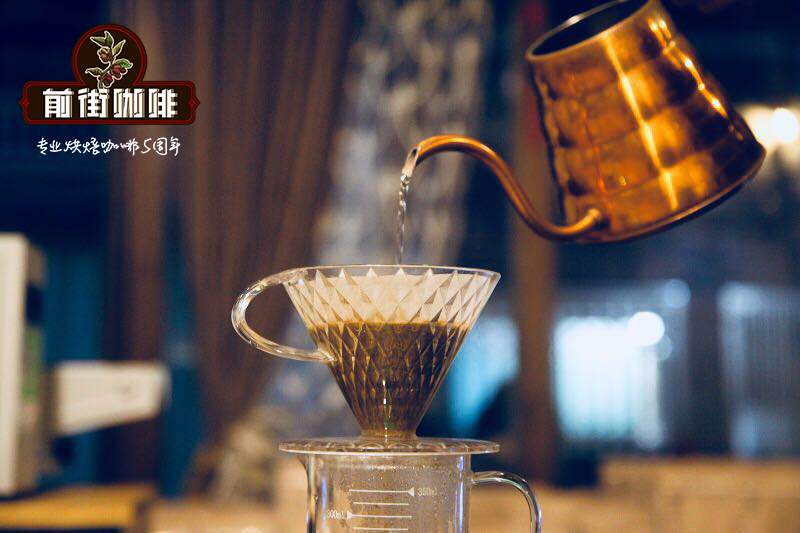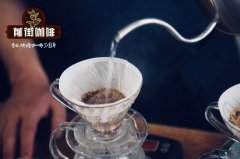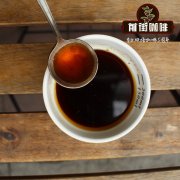Understanding the steps of hand-brewing Coffee improving the quality of hand-brewing in three stages

Professional coffee knowledge exchange more coffee bean information please follow the coffee workshop (Wechat official account cafe_style)
With regard to drip coffee, mastering the ability to control coffee extraction is the best and trickiest thing. Among them, there are many variable factors that need to be considered: the grinding thickness of coffee powder, the ratio of water to powder, water temperature and so on. But as long as you operate it correctly, you can also make a delicious cup of coffee.
The three-stage theory of drip coffee may help you understand the extraction of coffee and adjust your parameters by strengthening and weakening the different stages to make a good cup of coffee.
The pre-soaking stage (or steaming stage) is the first stage of hand flushing or dripping. Pour a small amount of water first, just enough to soak all the coffee powder, and then the pre-soaking period is about 20-30 seconds. This step has a simple purpose: to release carbon dioxide.
During the roasting process, the organic matter inside the coffee beans changes, producing carbon dioxide. (roughly speaking, slightly roasted coffee beans have higher internal water content, so there is not as much gas inside the beans as deep-roasted coffee beans, especially those that enter the second explosion will release more carbon dioxide. )
Coffee beans continue to exhaust after roasting, so in the process of brewing, when the coffee powder comes into contact with hot water, the coffee powder begins to release the gas inside the coffee. This is the reason for the expansion of coffee powder. As you might expect, the more gas spills out of the coffee powder, the bigger the drum will be.
The importance of steaming is twofold: first, carbon dioxide itself has a sour taste that you don't want to taste when drinking it. There is a difference between this sour taste and the bright sour smell in coffee. ) so letting these gases out during steaming can avoid bringing this sour taste into the coffee liquid and better ensure the taste when you drink it.
Second, when the coffee powder removes the gas, the gas forms a force that pushes your injected hot water toward the edge of the coffee powder, which affects the extraction of the coffee. As a result, the coffee powder on the top and edge may be over-extracted, but not enough on the inside. However, after the gas is discharged, many small pores will be formed between the coffee powder, so that the coffee powder can be in better contact with water and can fully and evenly extract the ingredients in the coffee. So this is also the necessity of steaming.
The next stage is the core of controlling the taste of your coffee. This is because we extract different chemicals at different stages of extraction: first, you get a fruity acid, then sweet, then bitter. Note that not all acids are ideal for fruit: for example, caffeoylquinic acid is a source of dryness and bitterness. The acids we are talking about here refer to the chemicals that produce an acidic taste. )
Since different chemicals are extracted at different points, you can skillfully adjust your extraction curve to show the desired coffee flavor. Then there is the best way to control the water temperature and brewing time.
Generally speaking, the ideal brewing water temperature is between 88 °C and 96 °C (196 °F to 205 °F). The degree of baking, the presentation of flavor, the solubility, the freshness of coffee beans, the thickness of grinding. All of these can play a decisive role in different water temperatures.
Another important consideration is the "frequency" at this stage. That is, when brewing coffee, use multi-frequency and small amount of water injection. For hand-brewed coffee, the goal is to use multiple injections to achieve consistency in the taste of coffee, and some people suggest reducing the number of injections-which can also reduce the variables that baristas need to master during extraction.
As you know, the core principle of extraction is dissolution and diffusion. Whether it is completed by one-time water injection or multi-frequency and small amount of water injection, it is designed to fully dissolve the substances in the coffee in the water, highlight the flavor of the coffee and make the coffee taste better. Fewer times of water injection, the amount of water will shorten the extraction time, bitter substances are not easy to be extracted; multi-frequency and small amount of water injection will extract more substances from the coffee, the alcohol thickness will be higher, and the aroma will be stronger.
The "final stage" refers to the last 40% of the extraction. The last, the most critical, you need to control very carefully. Because the final extracted chemicals dominate the presentation of bitterness and some undesirable flavors, overextraction can ruin a whole cup of good coffee. But the aroma of coffee, caramel or flowers, will basically come out at this stage.
So we should pay attention to the brewing time and, of course, the temperature. At this stage, a lower water temperature can reduce this part of the extraction; in this way, you can extract a cup of sour and sweet balanced coffee. For example, if the water temperature is set to 94 °C when steaming is used, the water temperature in the extraction stage will reach 91 °C, and the water temperature in the tail section will be 87 °C-the water temperature at the tail end is 4 °C lower than that in the extraction stage, which can extract less bad taste.
However, it is necessary to adjust different parameters according to different types of coffee, and this setting of lowering the water temperature is to ensure sweetness, fruit aroma and balanced taste.
Whether it is brewed at home and produced in a cafe, every factor in the process of hand brewing is very important, and the temperature variable is one of the many key factors that need to be controlled.
Devote yourself to a good cup of coffee. I hope this article will be helpful to your coffee making.
Important Notice :
前街咖啡 FrontStreet Coffee has moved to new addredd:
FrontStreet Coffee Address: 315,Donghua East Road,GuangZhou
Tel:020 38364473
- Prev

What is the effect of the size of the hand current on the coffee? the water injection technique of hand coffee
Professional coffee knowledge exchange more information on coffee beans Please follow the coffee workshop (Wechat official account cafe_style) because instant coffee powder does not need to separate dregs, the thickness depends on how many teaspoons of coffee powder. By contrast, the public will find the hand-brewed coffee to be filtered complicated and complicated. In fact, for each packet of coffee beans, you only need to find a suitable degree of roughness, and then cook it.
- Next

Detailed teaching of the practice of Laohua Coffee: the three methods of Laohua Coffee learn to make Lahua Coffee from scratch
Professional coffee knowledge exchange more coffee bean information please pay attention to the coffee workshop (Wechat official account cafe_style) the practice of jacquard coffee: directly into the forming method is a difficult method in the coffee jacquard technique. After foaming, the milk is quickly poured into the espresso before it is separated from the foam, waiting for the milk and coffee to be filled.
Related
- What is the meaning of lactic acid fermentation with coffee bean treatment?
- How to judge the state of foam by sound?
- How does the latte pull out the unicorn pattern? Come to get for a little trick to improve the flower pull!
- Will flower pulling affect the taste of the latte?
- Do you know the history of coffee?
- The difference between honey treatment and sun washing what is raisin honey treatment?
- What kind of milk can a novice use to make coffee foam to keep the foam longer? The correct method and skills of milking tutorial sharing
- Why do washed coffee beans taste sour? Flavor characteristics of washed Coffee
- Introduction to the skill of how to practice the size and height of water injection around the circle of hand-brewed coffee
- How do beginners practice coffee flower drawing from scratch?

